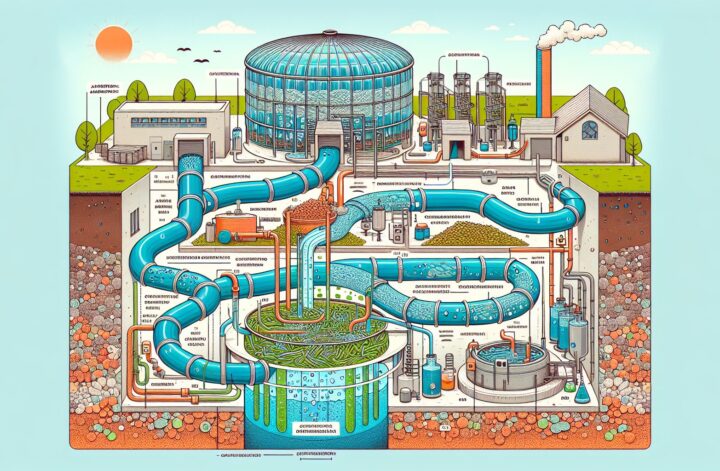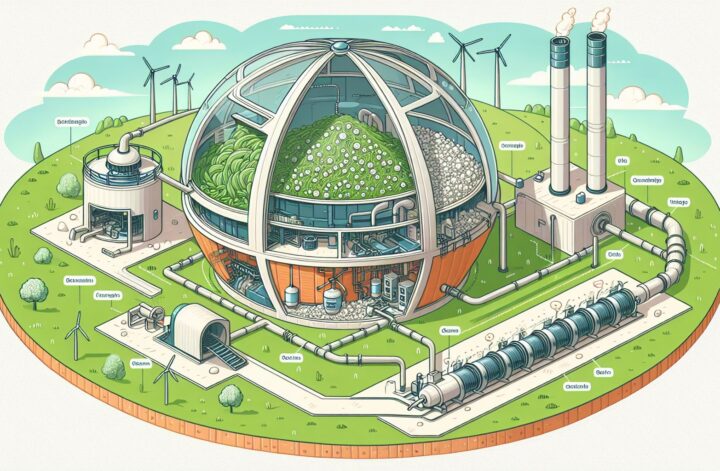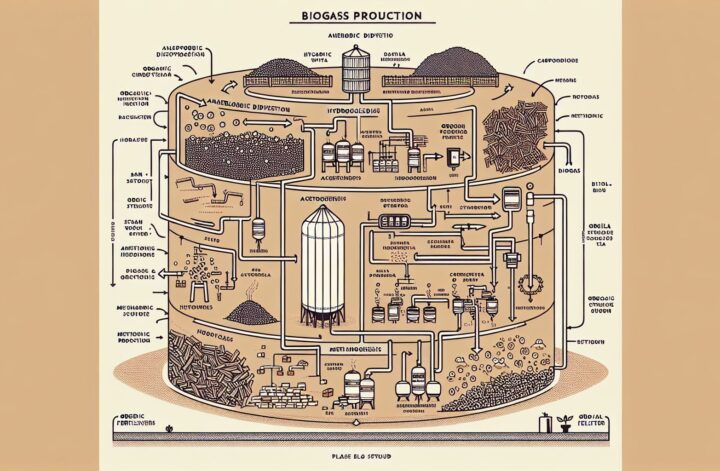With increasing environmental concerns and the constant hunt for renewable sources of energy, a familiar and often overlooked process has risen to attention – the process of Anaerobic Digestion. With its potential for energy generation and organic waste management, it has become an important perspective in the field of waste treatment.
Anaerobic digestion refers to the conversion of organic matter into methane and Carbon Dioxide in an oxygen-free environment by microbes and bacteria. One fundamental application of this process lies in Sludge Stabilization. But what is sludge stabilization?
What is Sludge Stabilization?
Sludge stabilization refers to the process where organic materials present in the sludge are broken down, reduced and converted into stabilized substances, essentially reducing the pathogens to a level safe for disposal or reuse[^1^]. It is a crucial phase in wastewater treatment, aiming at reducing the biodegradability and putrescibility of sludge, making it safer and easier for disposal or application as a soil conditioner.
The most crucial part of the stabilization process is the reduction of organic solids, often referred to as Volatile Solids, that have a significant potential to cause malodors and diseases.
The Role of Anaerobic Digestion In Sludge Stabilization
Anaerobic digestion plays a vital role in sludge stabilization. It’s a biochemical process involving a series of reactions, carried out by different bacterial communities, in absence of oxygen.
Four primary biological and chemical stages include Hydrolysis, Acidogenesis, Acetogenesis, and Methanogenesis. During these processes, complex organic materials get converted into simpler substances, and finally into biogas, primarily composed of methane and Carbon Dioxide.
Biogas, generated in this process, is a renewable energy source, which can be used for heating, electricity generation or can be converted into biofuel after certain upgrading processes like biogas scrubbing[^2^].
Factors Affecting Sludge Stabilization Process
Like all biological processes, sludge stabilization through anaerobic digestion is sensitive to various physical and chemical conditions. Two such important factors are Hydraulic Retention Time (HRT) and Solid Retention Time (SRT).
HRT is the average length of time that a soluble compound stays in a constructed reactor, while SRT, also called sludge age, is the average time that the bacteria stay in the system.
Optimization of HRT and SRT is important for achieving maximum volatile solids reduction and optimum biogas production. However, issues like ammonia toxicity and sulfide toxicity can lead to inhibition of anaerobic digestion, hampering the process.
Future Prospects
With advancements in technology, methods like high-rate anaerobic digestion are being developed, which increase the efficiency of digestion process and methane production rates.
Moreover, research is being carried out to understand and engineer the anaerobic digestion microbiology, syntrophic relationships among different microbial communities, and to ensure trace element supplementation for healthy microbiological activity[^3^].
Conclusion
Anaerobic digestion, long known for its usage in wastewater treatment, remains a focal point of considerable scientific and engineering research. Its efficiency, environmental benefits, and potential economic profitability forecast a future where such natural processes could be harnessed to their maximum to produce clean, renewable energy and manage waste effectively, striking a balance between human activities and the environment we live in.
Whether it’s about designing more efficient anaerobic digester designs or using co-digestion of different types of waste materials, the field promises noteworthy advancements in the coming years. As sludge production continues to grow with rising urbanization and industrial development, sludge stabilization techniques will remain a pressing necessity and a rewarding subject of study.
References
[^1^]: Eastman, J. A., & Ferguson, J. F. (1981). Solubilization of Particulate Organic Carbon during the Acid Phase of Anaerobic Digestion. Journal (Water Pollution Control Federation), 103-117.
[^2^]: Gerardi, Michael H. (2003). The Microbiology of Anaerobic Digesters. Hoboken, NJ: John Wiley & Sons.
[^3^]: Speece, Richard E. (1996). Anaerobic Biotechnology for Industrial Wastewaters. Archae Press, Nashville, TN.




